Kevin Godbee
 There are certain pipe tobacco blends that have been around for decades, and a few for over a century. Several of us pipe smokers might consider these tobaccos to be famous. Some examples that come to mind are; Escudo, Dunhill My Mixture 965, Balkan Sobranie, and many others – (feel free to add your favorites in the comments below). Bell’s Three Nuns has a history of approximately 123 years. It is definitely one of the famous tobaccos that is still brought up in current conversations today. Previously unavailable in the U.S.A. for the last 18-years, as reported here, Three Nuns has arrived on our shores once again just this past June.
There are certain pipe tobacco blends that have been around for decades, and a few for over a century. Several of us pipe smokers might consider these tobaccos to be famous. Some examples that come to mind are; Escudo, Dunhill My Mixture 965, Balkan Sobranie, and many others – (feel free to add your favorites in the comments below). Bell’s Three Nuns has a history of approximately 123 years. It is definitely one of the famous tobaccos that is still brought up in current conversations today. Previously unavailable in the U.S.A. for the last 18-years, as reported here, Three Nuns has arrived on our shores once again just this past June.
Getting back to those current conversations that still come up today, we need to talk about the elephant, or shall I say, the devil in the room. When the aforementioned news came out, conversations exploded in the pipe smokers forums with several simultaneous threads running which I have decided to call the "Shrieks of No Perique!" threads.
Cut to the chase: Three Nuns, at one time had 22% Perique tobacco in the recipe, and now it does not.
And actually, that is not totally correct. One-third of that so-called 22% is "Manufactured Perique"! So there was really about 14% actual Perique tobacco and 7% of another tobacco with added flavoring…"23.5 lbs of casing per 100 lbs of dry weight strips". (Who knew I’d have to do math for a tobacco article?)

When we made the editorial decision to have our prominent home page tobacco review for the September issue be that of Three Nuns, I knew we would need to address this topic. So we are going to have are three related pieces.
1. The bit you are currently reading which will have the most complete history of Three Nuns so far, some editorial assertions, and my own little mini-review of the current Three Nuns at the end.
2. The full blown tobacco review by our staff expert E. Roberts… and …
3. G. L. Pease’s recently published Out of the Ashes column, "Nothing Endures, But Change", which discusses how tobacco blend recipes change, and offers his editorial perspective. (Keep in mind that Pease’s piece is not singling out Three Nuns. His fictional account could be applied in real life to many tobacco blends.)
Getting back to the recipe for Three Nuns, look at this PDF of a memo from July 28, 1971, marked "Private & Confidential", from B.A.T. It gives the recipe for Three Nuns at the time. Notice the part that reads; “The Blend consists of: – Perique 22% (1/3rd of which is manufactured Perique) …” then in the next paragraph, the formula for manufactured Perique is given along with the "casing / Flavour – Casing F-14 – (Manufactured Perique)".They go on to list ingredients that only exist as code words. There are no definitions of three of the four ingredients – the fourth being water. Sources that wish to remain anonymous tell us that it was common for the tobacco industry to have code words for the ingredients in their casing recipes. There are other fascinating espionage-like, top-secret things we uncovered in our research as well.
One example has nothing to do with Three Nuns, but it’s fun to see anyway. There is a March 17, 1964 letter from American Tobacco Co to BAT Liverpool. They were trying to copy Mac Baren’s Mixture. The letter shows that they shipped the samples of Mixture in Three Nuns Tins to disguise it, as if some corporate spies might intercept it, and if so, they would be fooled. There is also an endeavor code-named "Project Convent" in 1987, which is referenced further down in this article.
It seems that the story of Three Nuns is not complete in any one place, or in any one person’s experience or memory–and memories are not perfect. This is not really surprising since, as we said before, Three Nuns been around for about 123-years. We contacted four different companies and didn’t really get too far.
Sutliff Tobacco Co., the U.S. importer / distributor referred us to Mac Baren, the current producer. Mac Baren referred us to Imperial Tobacco, the British holder of the rights to the Three Nuns name. Imperial Tobacco referred us to Sutliff–we came full circle.
Now we know why they use code words in the recipes–they don’t really like to talk about this stuff…and to be fair, nobody really had all of the information at their fingertips, nor the time to piece it together. I also sent an email to my contact at Orlik / STG (the former producer of Three Nuns before Mac Baren) and did receive some information over the course of three emails. However, we found that even when someone was willing to take some extra time to try to help, that accurate information was still challenging to come by. Even with our contact reaching out to his retired colleagues, we still didn’t piece together the full picture.
The questions I asked everyone regarding Three Nuns was: Who originally created it? When? Where was it originally produced? What is the history of the changing of ownership rights? When did the blend change to not having Perique and why was the change made? How was this compensated for in the recipe?
As it turns out, we had to dig deep, and spend dozens of hours researching to try to answer the questions ourselves.
Here is what we have been able to piece together –
Three Nuns list of different manufacturers/versions:
– early 1890s – 1904: J & F Bell Glasgow, Scotland
Then, for the next 100-or-so-years, there were different production houses for different geographic and demographic markets.
(For Domestic UK distribution / consumption)
– 1904 – 1957: Stephen Mitchell & Son, Glasgow, Scotland
– 1957 – late 1980’s H.O. & W.D. Wills, in Glasgow, and then Ogden’s in Liverpool
– late 1980’s-current: Imperial Tobacco (the pouched version with no Perique) Liverpool, and Nottingham since 2007.
(Export from UK – to the US and other markets)
– 1911 – 1990: British American Tobacco, Liverpool, England
– 1990 – 2013: Orlik /STG, Denmark
– 2013 – present: Mac Baren, Denmark
The version that most U.S. pipe smokers remember as the "original" was probably the one made by BAT in Liverpool, which ended production in 1990. One of B.A.T.’s responsibilities was to produce and distribute Imperial brands outside of the domestic UK market.
Some more corporate documents we unearthed that helped piece together the history are as follows:
- October 12, 1972 – Imperial Tobacco London to BAT London Re: Reorganization, movement of production, but noting that Three Nuns will stay at W.D. & H.O. Wills’.
- April 29, 1986 – BAT UK & Export, Woking – Letter to Wintermann’s – Follow up on March visit to discuss possibility of making spun rope on cigar machines.
- July 31, 1986 – Liverpool Memo Re Test making ropes on cigar machines at Winterman’s in Holland.
- July 30, 1987 – One year later, the experiment with the cigar machine is not working out. It is named Project Convent.
- October 28, 1988 – Notes on meeting to discuss removal of coumarin from pipe tobacco blends. Three Nuns does not contain coumarin. However, Perique tobacco and discussion of a substitute, Perique replacement flavor, is considered.
|
In January / February of 1990, British American Tobacco transferred production of Three Nuns (along with other tobaccos) to Orlik in Denmark. See PDF here. Orlik is not mentioned by name, but we have confirmation from various sources. You will notice that Three Nuns actual production in Denmark was slated to begin in April 1990.
After having uncovered all of this information, plus other documents not published here, numerous emails and conversations, and sampling different vintage tins—it only gets more intriguing. Using the puzzle analogy, it seems that not only are some of the puzzle pieces missing, but some pieces came from a different puzzle box—they just don’t fit at all.
Prior to unveiling the above referenced documents, we were given dates ranging from 1988 to 2003 for the start of production in Denmark. (The actual start was 1990.) The one consistency in this faulty information, which was also flawed, is that Three Nuns never contained Perique for the entire time it has been made in Denmark.
[Insert game show buzzer sound.] Wrong!
We have printed corporate records that discuss Perique being contained in the recipe at least until 1994.
Things get a little fuzzy after that as far as corporate documentation goes. However, for the purposes of our investigative reporting, a colleague opened a sealed 1998 vintage tin of Three Nuns and we both sampled it.
Without a doubt, this tin contains Perique. It is unmistakable in the can aroma and extremely apparent when smoked–stewed fruit and pepper are hugely evident in the flavor-profile. We are 100% sure that there is Perique in this tin. As far as confirmation from a third-party source as to the dating of this tin—I choose to believe what my friend tells me in hopes that I will continue to receive more 15-year old aged tobacco in the future. This tin does say it was made in Denmark.
This was really amazing tobacco. Here are a couple of tin shots of the 1998 Three Nuns, made in Denmark, containing Perique.
It was sometime around the late 1990s to early 2000s that Three Nuns was no longer exported to the USA. There was also a pouched version without Perique, while at the same time a tinned version with Perique both floating around in different markets. The tinned version was maintained for an up-scale market of duty free shops, and the pouched version was kept away from those outlets. The pouch packaging implied inferiority, and in this case, it was a true. It was a different blend in the pouch, and consumer feedback was negative.
Below is a tin from Orlik’s production that I purchased at The Danish Pipe Shop when I was in Copenhagen in July 2010. You can see that the label is oriented vertically instead of horizontally, likely to accommodate the warning label required by law. I did not detect Perique in it when I smoked it a few years ago. (My Nording Hunter Series Wild Boar pipe is in the foreground.)
Here are some additional corporate memos with some extremely fascinating information –
September 10, 1992 – BAT Memo and report on the pipe and ryo tobacco market. States that Perique is contained in Three Nuns. Also states trademark is owned by Imperial and rights for use granted to BAT under a 1976 license.
(Excerpt from September 1992 memo)
———————————————
MARKETING STRATEGY
The marketing strategy for all the tobacco brands follows a similar format except Three Nuns has been established as BATs premier pipe tobacco which differentiates it from the UK Imperial version which is ready rubbed and packed in a pouch . This positioning for Three Nuns in Duty Free is to be upheld in order that we have a brand which can be marketed against competitor premium tobacco brands such as Dunhill . On account of this it will remain as a rope tobacco which is packed in a tin, with its own distinctive presentation.
FUTURE ACTION
Three Nuns will remain as current but will be subject to review in 1993.
———————————————
December 28, 1993 – Fax from Orlik to BAT with cost estimate shows recipe for Three Nuns Ready Rubbed would contain 7% Perique.
February 8, 1994 – Meeting follow up letter to Orlik from BAT re: 1994 – 1995 plan. Item 5 – Three Nuns still has Perique, but they are planning to change it now. It seems Ogdens makes it for the UK domestic market, and that they have already swapped out the Perique in that version.
"5. Three Nuns
The experimental blends were comparable in smoking terms to the Ogdens version. Differences were noted in the visual appearance, with the Ogdens blend having a higher inclusion of black tobaccos. The BATUKE blend carried its distinctive Perique nose. New blends will be developed substituting the Perique with a higher inclusion of Black Cavendish or processed fire cured tobacco. BATUKE to request Ogdens permission to use their flavour and for confidential disclosure of ingredients for AMGP approval."
So, why did the Perique go missing somewhere around 1999? Did the Y2K bug have anything to do with it? What about The Artist Formerly Known as Prince? Was everybody too busy partying like it was 1999?
Seriously though, in the late 1990s through the mid-2000s, the supply and quality of Perique had been in a steep decline, which was probably the impetus for the change. Read more on this in "The Mystique of Perique".
Now that we’ve had some time down memory lane, let’s get back to the present. In Deepak Chopra’s book, “The Ultimate Happiness Prescription: 7 Keys to Joy and Enlightenment” – He explains how you can only be truly happy living in the PRESENT. Not in the PAST, and not even thinking about the FUTURE either. The PRESENT is key.
Presently, we have the 2013 current version of Three Nuns, made by The Mac Baren Tobacco Co. under license from Imperial Tobacco Co., and distributed in the U.S.A. by The Sutliff Tobacco Co.
It seems most likely that Three Nuns has not had actual Perique tobacco in it for at least 14-15 years. In that case, do we really need all of the "Shrieks of No Perique!" forum threads and comments?
I say "NO. We do not." This is old news that people are talking about like it happened yesterday. Individuals are referring to the current Three Nuns, as the "New Three Nuns". The "New Three Nuns" recipe is 15-years old ladies and gentlemen!
If you want to just moan and complain about the good ol’ days, knock yourself out. But if you don’t try the new 2013 Mac Baren version of Three Nuns, you are really missing out. It’s exceptionally good!
Here are some photos from my tin when it was new –
It looks pretty delicious, doesn’t it? It is.
I have smoked an entire 50-gram tin of the current Three Nuns made by Mac Baren. The production date on the label is March 2013. I smoked it during most of the month of August. It has now gone up in smoke, and it was delightful.
The tin aroma is dominated by the smokiness of the Dark-Fired Kentucky. Interestingly though, the DFK leaf is a harmonizing, synergizing factor. It does not dominate the flavor like it does the tin aroma. The flavor is sweet, savory and slightly tart at the same time. I’ve smoked it every day for 3-weeks, and I love it! The moisture level was perfect for smoking right out of the tin. The coins fall apart a little bit, but that makes it easier for rubbing out. I know this is a cliché, but the tobacco burns cool and down to a fine, powdery white ash – and I tend to puff hard, especially with a tobacco that is full of flavor like this one.
I found it to be of mild-to-medium strength in nicotine [read Russ’ new article on nicotine here], and only got a little buzzed one time when I smoked a group 5 bowl at a fast pace. Smoked in a group 3 or 4 bowl at a slow pace, and it is just packed with flavor, and no light-headedness.
Three Nuns is a Religious Experience that shouldn’t be missed.
Please be sure to read the full review by E. Roberts, he has some quite interesting things to say, and provides much, much more detail.
|
Kevin Godbee is the Publisher & Editor in Chief of Pipes Magazine. Kevin started smoking pipes and cigars in 1998 and started an online cigar magazine & community site in 2005. (The site was acquired in 2008 and no longer exists.) He launched PipesMagazine.com in 2009, and in less than three years the site has become the largest trafficked pipe smoking related site, and the #1 Source for Pipes and Pipe Tobacco Information. In the beginning of his career, Kevin worked in the hobby and specialty toy business for 16 years in sales, marketing, advertising and product development for three different manufacturers, and with his own company. Over the last 10 years working in the online business, he has become an expert in Internet Marketing and SEO. Kevin is a Certified Master Tobacconist (CMT) through Tobacconist University, a member of Cigar Rights of America and is a "Media Member" of the International Premium Cigar & Pipe Retailers Association. In his spare time he sings, plays guitar, cooks, and enjoys all the wonderful places to go and things to do in beautiful downtown St. Petersburg, Florida where he lives in his penthouse bachelor pad. Kevin has been smoking pipes and cigars for 15 years. |


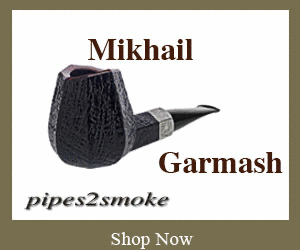



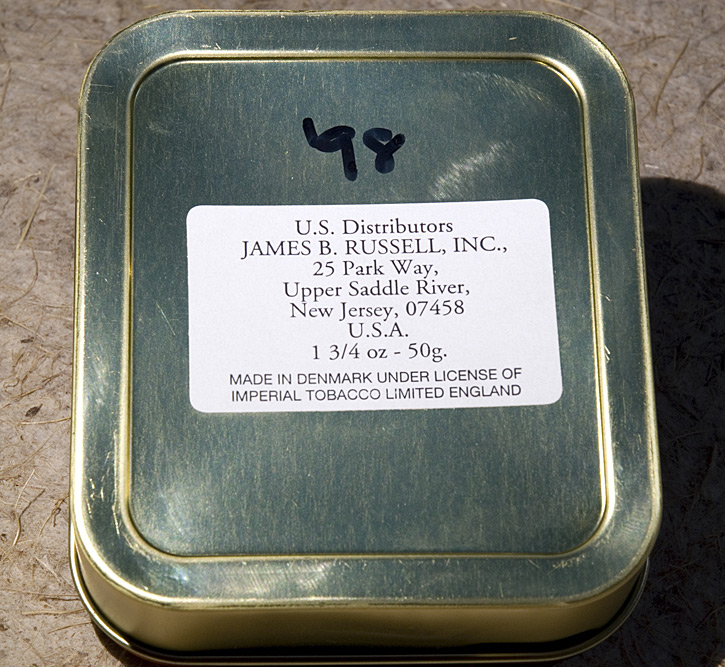
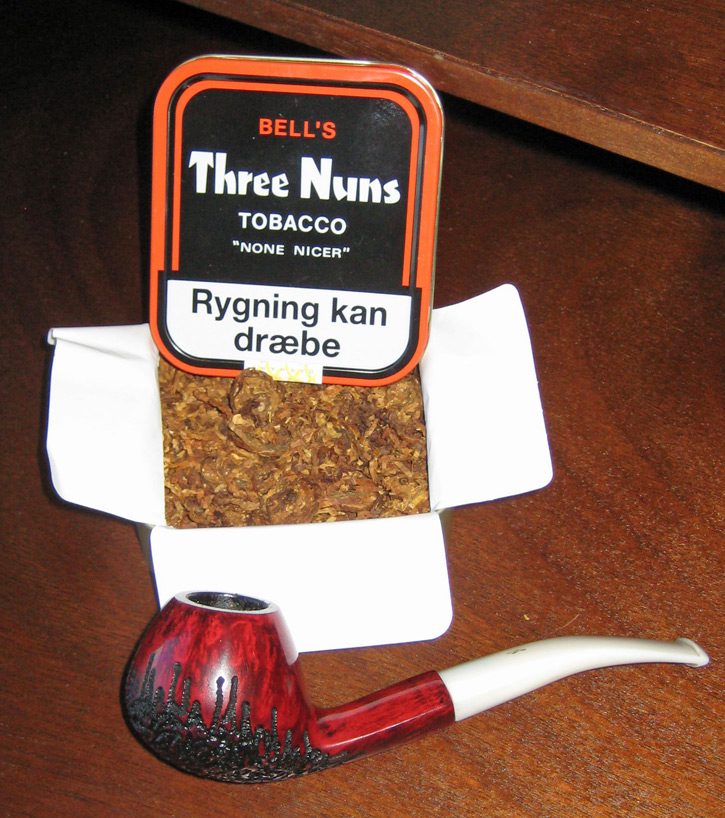
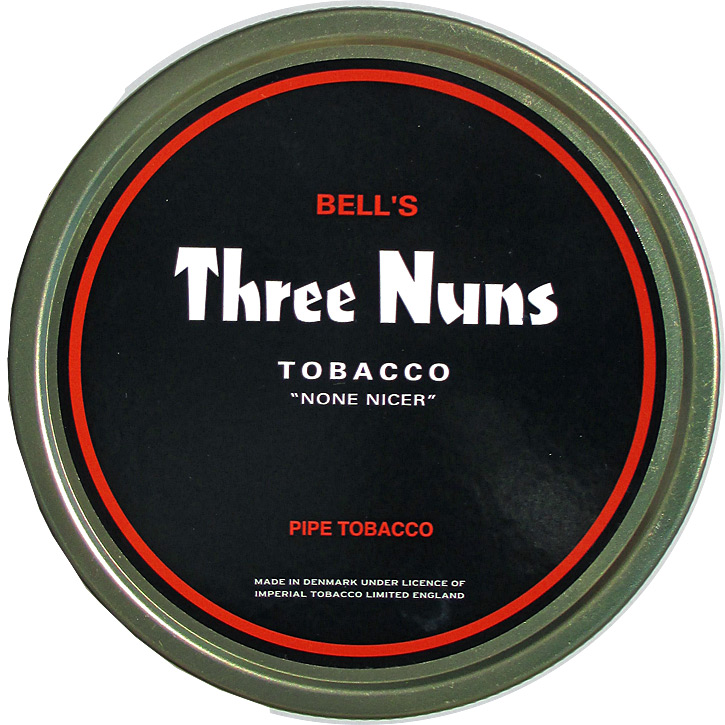
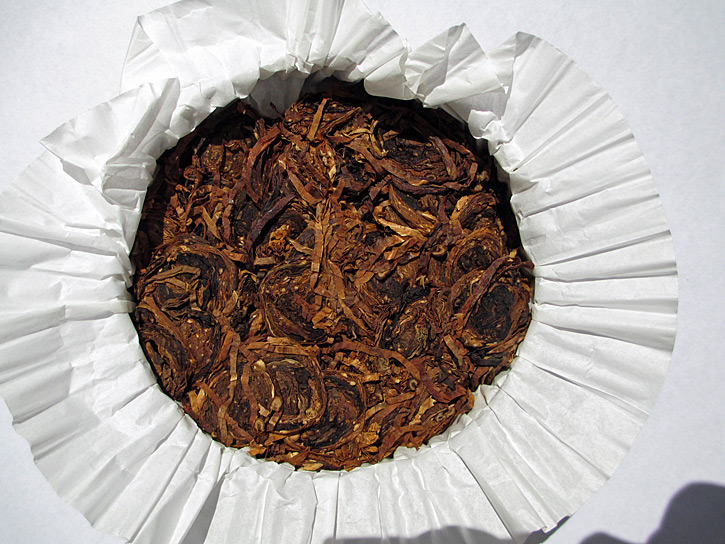
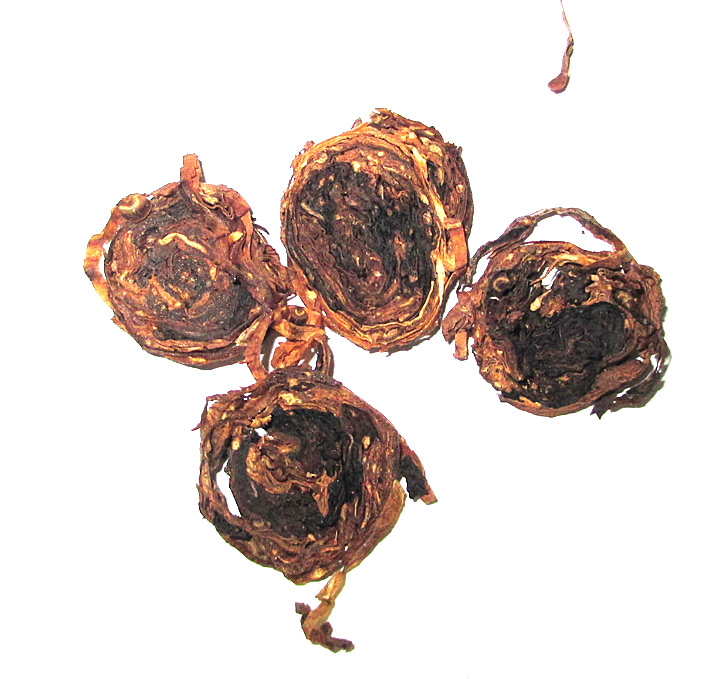
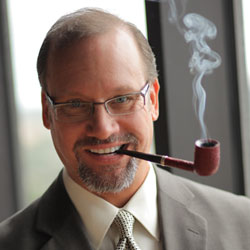
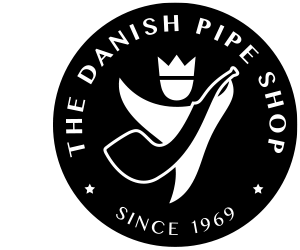












Wow, I smoked the old stuff and wasn’t so nuts about it. I will have to try the new one some time. Kudos for all the research on this topic. Some of my buddies at GKCPC will be delighted…they have paid big bucks for the same stuff.
Very interesting read. I need to try this for myself i haven’t experienced any version of Three Nuns yet.
Putting away the pom poms, the reality of life is, if you want and expect your Three Nuns with Perique, the current Three Nuns won’t make the grade. As a Va/Bur, if that’s what you want and are looking for, sort of a high end Lucury Bulls Eye Flake, or, more accurately, a better quality Newminster Superior Round Slices, then the Mac Baren Three Nuns is definitely worth a shot. Me? I’d like to see it with Perique. While it’s true living in the past is not always a good thing, it’s also important to note that the reason why Three Nuns lost its Perique decades ago also does not necessarily relate today and while difficult, contracts can be amended to bring back the Three Nuns of old that actually earned the slogan “None Nicer.”
I have not tried any version of three nuns either, but it’s been on the list and I will definitely be getting a hold of it! Great article. Such hard work! I like seeing the different tobacco companies as countries and all involved in secret warfare against each other. Exciting! Pew Pew!
With reference to the “code names,” some of it is really pretty silly. For instance, water was coded “HOTANTIS” in some documents. CELANDO, MOLON and BICARA are a little more interesting, but only just. They’re things like glycerine, invert sugar, and soluble gum. Nothing really “secret” about them, anymore, as anyone with some google sense can find them in various databases or out of print books…
.
But, I love the cloak-and-dagger thing. I wonder if the blendmasters could be found clad in white lab coats, working in secret laboratories with stainless steel walls, having endured sophisticated entry protocols including retinal scans, challenge words and fingerprinting in order to gain access.
.
“How was your day at work, dear?”
.
“Oh, right. Fine. Almost had my eye burned out by a damned retinal scanner gone haywire. Oh, wait. Just kidding.” (Nervous laughter.) “Just another day selling insurance, dear. You know. Cold calls, filling out forms, clandestine meetings, that sort of thing. Nothing special about it.”
.
“I noticed some strange stains on your shirt. Have you been spending afternoons down to pub again?”
.
“No, dear. Just a bit of a messy sarnie at lunch. CELANDO, I think. I mean, mayonnaise. That’s what we call it at work, you know. CELANDO. Just mayo. Heh heh.”
I never smoked the older versions of Three Nuns, just the version done by MacBaren. I can say that this is a mighty fine blend. I intend to get more.
I am fortunate to be an old duffer and have smoke a fair amount of the old Original 3 Nuns. It’s unfortunate that the original recipe is not being used. I have not tried the new 3 Nuns but will in time. In memory, nothing compares to the old recipes, whether it’s 3 Nuns, Dunhill house blends, Sobranie 759 and so many others. I have to let the past live on with wonderful flavors embedded in memory.
And with the plethora of newly re-created blends to experience I consider myself very lucky that I can compare the new to the old and still enjoy a great bowl of tobacco. So I happen to tell many of my older pipe smoking friends, “get over it”, enjoy the old memories, and rejoice in the fact that we have so many new blends to enjoy.
But I’m still hoping that the new 3 Nuns is a pretty close match to the old!!! LOL
“… I love the cloak-and-dagger thing. I wonder if the blendmasters could be found clad in white lab coats, working in secret laboratories with stainless steel walls…”
This is a great article, appreciate all the sleuthing that you have done. I have not tried the older version with perique, but I do have the “now” version in the cellar, and will look forward to trying it in the near future.
But, I can multi-task, Kevin. For instance, I accepted the fact, before reading your article, that TN did not contain perique at least since the 90’s. I liked the non-perique version from Orlik. I plan on trying the MB version. And, I still want to taste TN with perique. That’s four things at once and none mutually excluding to the other. No either/or propositions for me, no sir. For the poor souls with only two options of either 1) Keeping what once was as a measure for the present or 2) trying the present production for what it is, well, you have cast your lot with today. Some will leave their lot where it was cast in the past. Who is to say the other errs? Hopefully each can be content with his own perspective.
Let me first say that I have been lucky enough to smoke several versions of Three Nuns and enjoy most (didn’t like the pouch version) of them. The most recent version is very enjoyable too. However, I think it is a dishonest marketing move to change a key component of the blend and still call it Three Nuns. I agree that leaf, as a product of nature changes as does the nature of things when a blend is moved from one manufacturer to another. I accept that without issue. But that’s not what we are talking about here. We are talking about a totally different blend using the same well known name. There are some things that simply shouldn’t carry on when missing a key component. Would we will still willing to call the Rolling Stones the Rolling Stones without Mick and Keith? Would we still call Nightcap Nightcap without Latakia? I am going to continue to enjoy the “new” Three Nuns because it is a great blend. But one would think that being a great blend would be good enough on its own merit without some of the marketing ploy. Just saying…
I can help shed a little light on the subject. Three Nuns was sold to the US as late as 1998. I know this because that was the last time I was able to purchase it from a US tobacco shop, and was told then the manufacturer was going to stop US distribution because of tobacco lawsuits. After that, I was buying it from Switzerland. Three Nuns still had perique in the 2002 tins that I bought. Sometime in 2003, I purchased a few tins and Kentucky had been substituted for the perique. I was told that Orlik took over production in 2003 and they made the decision to eliminate the perique and use Kentucky instead.
Most of us old-timers didn’t like the Orlik blend without Perique and the great hue and cry today is that with the purchase of the brand by Mac Baren’s they would return the blend to its former glory. As Mac Baren’s is a highly respected firm we had high hopes, but they have declined to undertake that task.
Whether you like the current blend or not (I find it bland and pedestrian) the point is that neither it nor its Orlik predecessor is Three Nuns. More like Two Novitiates. It’s like comparing Sally Field to Mother Teresa.
Does anyone really think this new blend would sell if we put it in a different tin with a different logo?
Let me make another point. We are not doing the companies who supply our products a service by failing to tell them when they have made a misstep. They cannot improve their products without accurate feedback. And mislabeling a product is not something we should willingly go along with.
I can’t thank PipesMagazine.com enough for this remarkable piece of investigative journalism. It is not only well written and informative, but it responds to the 3N controversy with pertinent, well documented facts in a timely manner. Work of this caliber and relevance earns and fully deserves our loyal support of PM.com’s sponsors. Put another feather in your cap, PM.com!
.
As for my take on the controversy, kcghost nailed it; but I will buy the Mac Baren incarnation of 3N and judge it on its own merits.
@kcghost – Dan, I respect your opinion, for which you have the right to express, but please allow me to correct you on one point of fact. You said; “that with the purchase of the brand by Mac Baren’s” … Mac Baren is producing under license from Imperial Tobacco. Imperial has owned the brand since the early 1900s, and they still do. Mac Baren has to produce it with the recipe dictated by Imperial.
As I noted above, contracts can be amended and in this case every effort should be made to do so.
Kevin, You are correct and I should have worded my comments regards Mac Baren’s (who I have great respect for) differently. Let’s put it this way, Mac Baren’s had the opportunity as part of the deal to request a modification to the recipe. They either didn’t make such a request or it was denied.
So this may be one of those “who sinned first” discussions. Because Imperial changed a great recipe (for whatever reason) doesn’t mean any subsequent product is the real deal.
The real complaint is we lost a great tobacco years ago and it looked like we had a chance to recover it only it didn’t happen.
I’m not even much of a VaPer smoker, so this issue doesn’t concern me much — indeed, I look forward to trying this blend on its own merits and from the sound of it I’ll like it purty good —– but anyway, I liked how Kevin took the time to distinctly point out all the historical facts and then proceeded to exclaim the “religious experience” of what it is, what it is right now, in our own time period, which is good — i would have thought that the comprehensive research on his part which clearly illustrates the long and convoluted history of the blend would have been a preemptive strike against the groan chorus of no perique, but alas, that chorus still persists. perhaps it was the wrong move by Imperial to call it 3 Nuns, it might even be a case of overlooking the market research and just going with the most recent blend recipe because it was “up to date”, maybe there’s a chance they’ll actually add perique at some point, probably for an additional cost if so, 3 Nuns is one of the most expensive tobaccos in the world to produce, so the profit margins are already slim. I say take Kevin’s advice and enjoy it for what it is, anyway, hasn’t Haddo’s Delight usurped 3 Nuns as the best VaPer of all time? I’d reckon that if Haddo’s was spun coin, it’d be like the real Bell’s treat, the old King’s Head, which was the stronger version of 3 Nuns. Never heard of it? That’s why the marketing dept. wisely chose the most famous name, and it seems as if their strategy is paying off. I can only hope that with the success Imperial is enjoying by bringing back these classics, will inspire them to release other lost gems, as well as St. Bruno for God’s sake, please please please bring St. Bruno over here! Yeah, I hope that when the Imperial beancounters notice on the new export quarterlies just how fattened up their bottom line has become from offering this stuff on our shores again may scream “Egads boys, we’ve been sitting on a goldmine all this time and never even knew it! Let’s get these goods to the presses! Tin ’em up and ship ’em out mates!” — it boggles my mind as to why for so long Imperial had decided not to take advantage of the huge North American market and instead ignore us completely, gee whiz, it’s like we didn’t exist! So, indeed, I’m celebrating Imperial’s success and hope for continued growth and prosperous times for all. Thank ye gods!
Pease, I hope you do a big article on Capstan also
I think money always leads a corporate decision, in this case to substantially change a tobacco recipe. I can’t say how the current recipe holds up in comparison to those past, but I do remember a great fondness for the recipe used in the early 2000s and bemoan the lunkheads who changed it.
Kevin, excellent piece of work on the history of Three Nuns. Two comments:
1. I think it’s misleading to use and/or resurrect a product that bears little or no resemblance to the original. “New and improved” is certainly an old marketing technique. There are times when something may be new, but not improved. In the case of Three Nuns, the decision to remove the topping and Perique from the mixture many years ago resulted in a tobacco that was simply not Bell’s Three Nuns. Once radically changed (and how can a tobacco stripped of a hefty dose of Perique and its unique topping be anything but radically changed?), it was no longer Three Nuns. Period. And if there’s no benefit in trading on the Scottish tobacco’s storied reputation, then why call it Three Nuns? I’ve smoked and owned the old Scottish stuff. Never cared for it in any iteration, and I sold my old tins. But many others loved it, and it was what it was — spun cut, casing, Perique, great VA and all. Sure, it may be impossible to replicate some of the old tobaccos as some ingredients are simply not available any longer. That’s an acceptable “failure” IMHO because if you can’t get some of the old ingredients, you can try your best to match the “classic” and deserve an “A” for effort. If you’re going to buy the rights to use an old name that stood for something, I think every effort should be made to faithfully recreate the taste and quality of the name you’re trading on. I think there are so many great pipe tobaccos available today, so I’m not saying everything was better in the good old days. And I’m not saying Rolls Royce should be making cars today that look and run like a 1935 Rolls. I think pipes and tobaccos are a different animal.
If I had Dunhill stamp and used it to impress the shank of a $10 bald, varnished, putty-filled bin pipe and drilled a white dot into the bit, would you believe me when I told you it was a Dunhill?
2. Over the decades, the bean counters and Grinches at Imperial Tobacco have been one of the industry’s worst offenders in killing classic tobacco blends and pipe brands. The company has cut the heart out of many fine brands of pipes and tobaccos by choosing “cheaper and easier,” providing inaccurate formulae when they do allow production, or simply quashing a blend or brand entirely. When I think of Imperial, I envision the storehouse in the last scene of Raiders of the Lost Ark: aisles of file cabinets with classic blend formulations that they are content to let die and have no intent of sharing, licensing or selling to anyone else.
A very informative essay. I am glad I still have several tins of ’80’s Three Nuns stashed. The new Three Nuns is not going to be close to the original Bell’s Three Nuns–pity–it was wonderful!
Great article. Three Nuns was among the first tobaccos I tried when I started pipe-smoking in late 1993, and quickly became one of my favourites exactly because of its particular flavour. It was very difficult to obtain in Italy after the year 2000 or so, and I moved on to other brands. I wanted to look for it again in recent times and was saddened after hearing it changed its recipe. I was very fond of the old one, but at this point I will try the ‘new’ Three Nuns to fully appreciate the differences.
To further corroborate what you said about perique being present in Three Nuns tin in the mid to late 1990s: I still have two (empty) tins, one purchased in 1996 and the other in 1999, and I’m very sure they both contain perique. Also, despite having been purchased in Italy, they both have “Made in England by Imperial Tobacco Ltd, Liverpool” written on them. (Same goes for two pouches of Three Nuns purchased between 1995 and 1996.
Cheers,
Rick